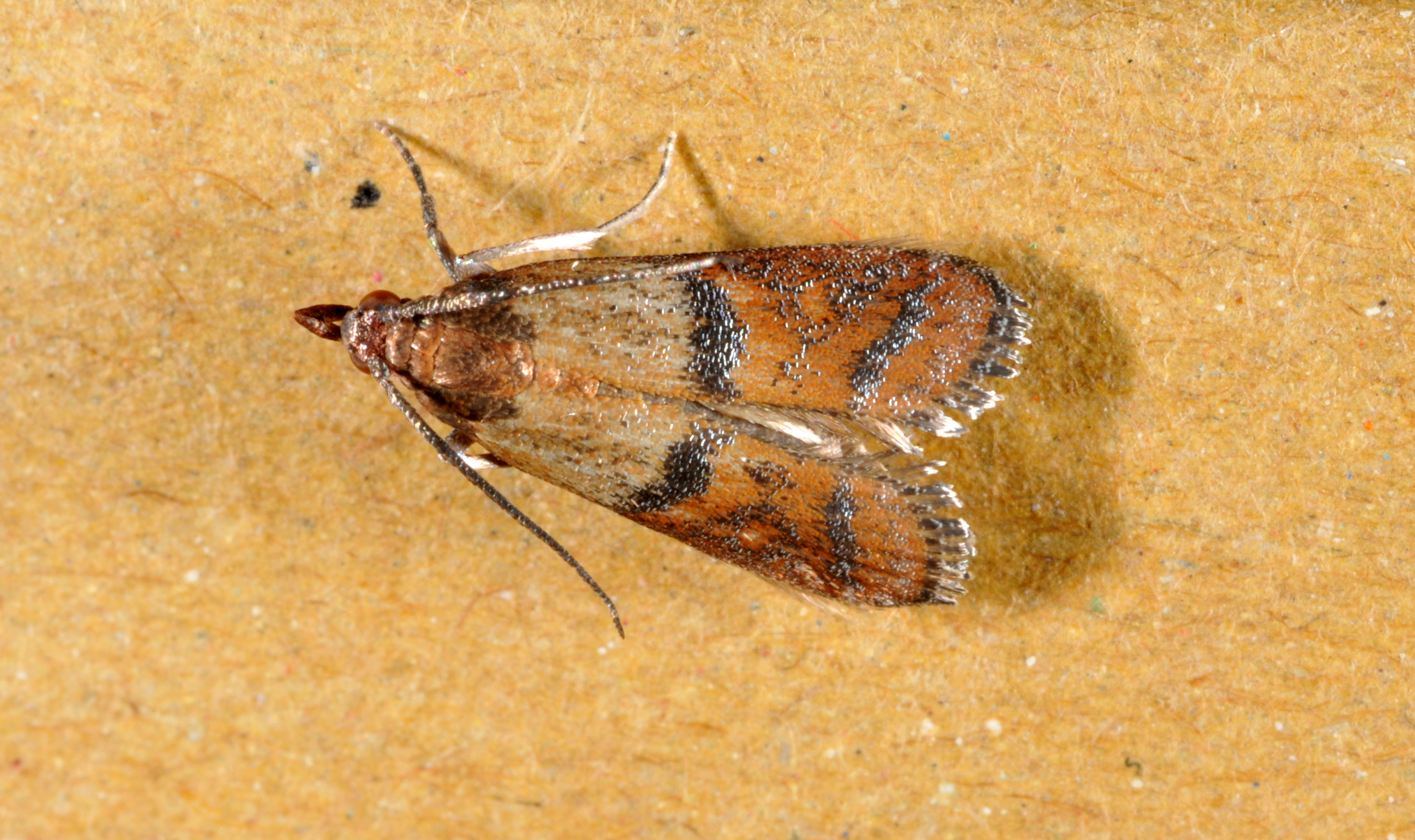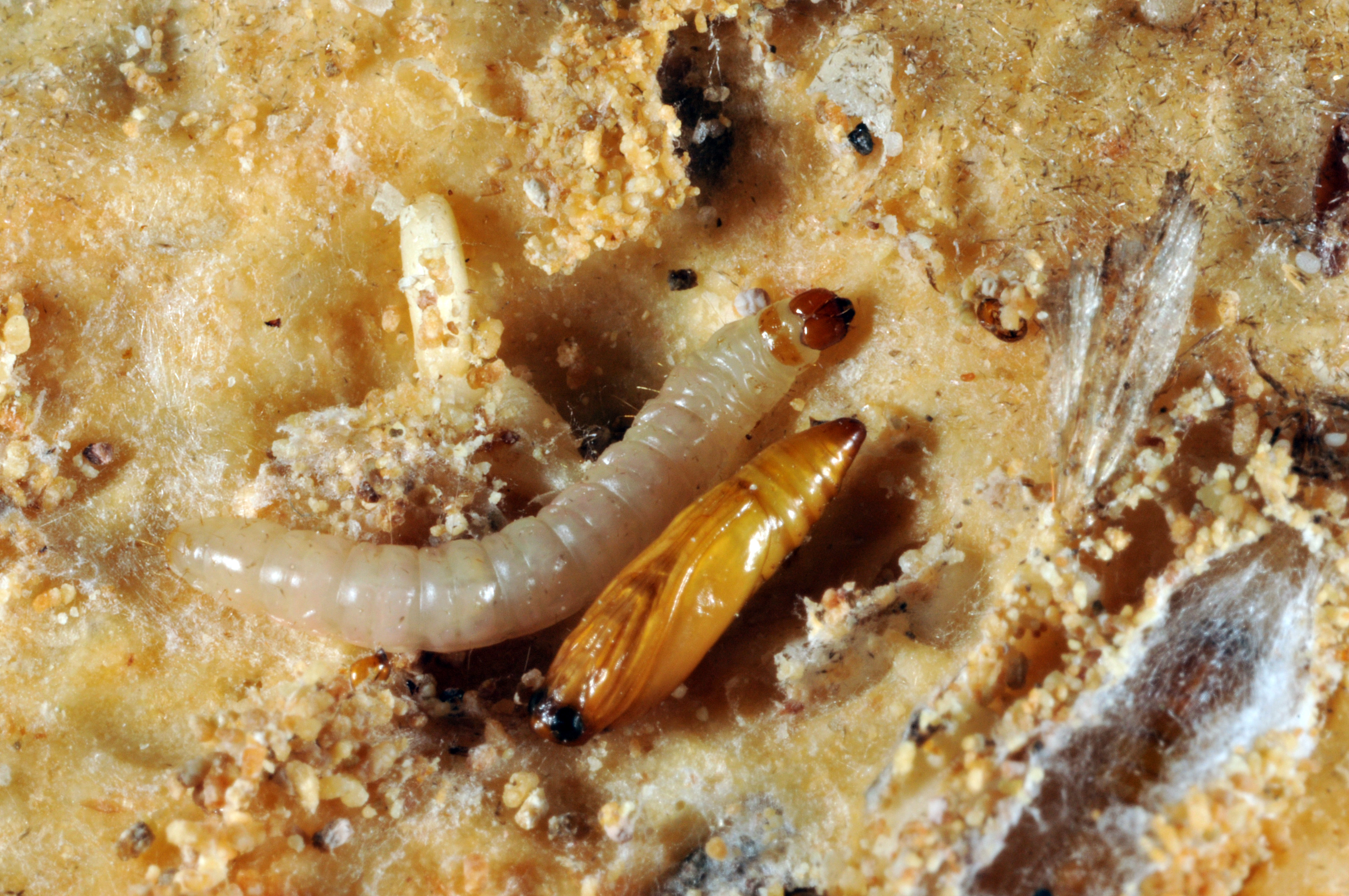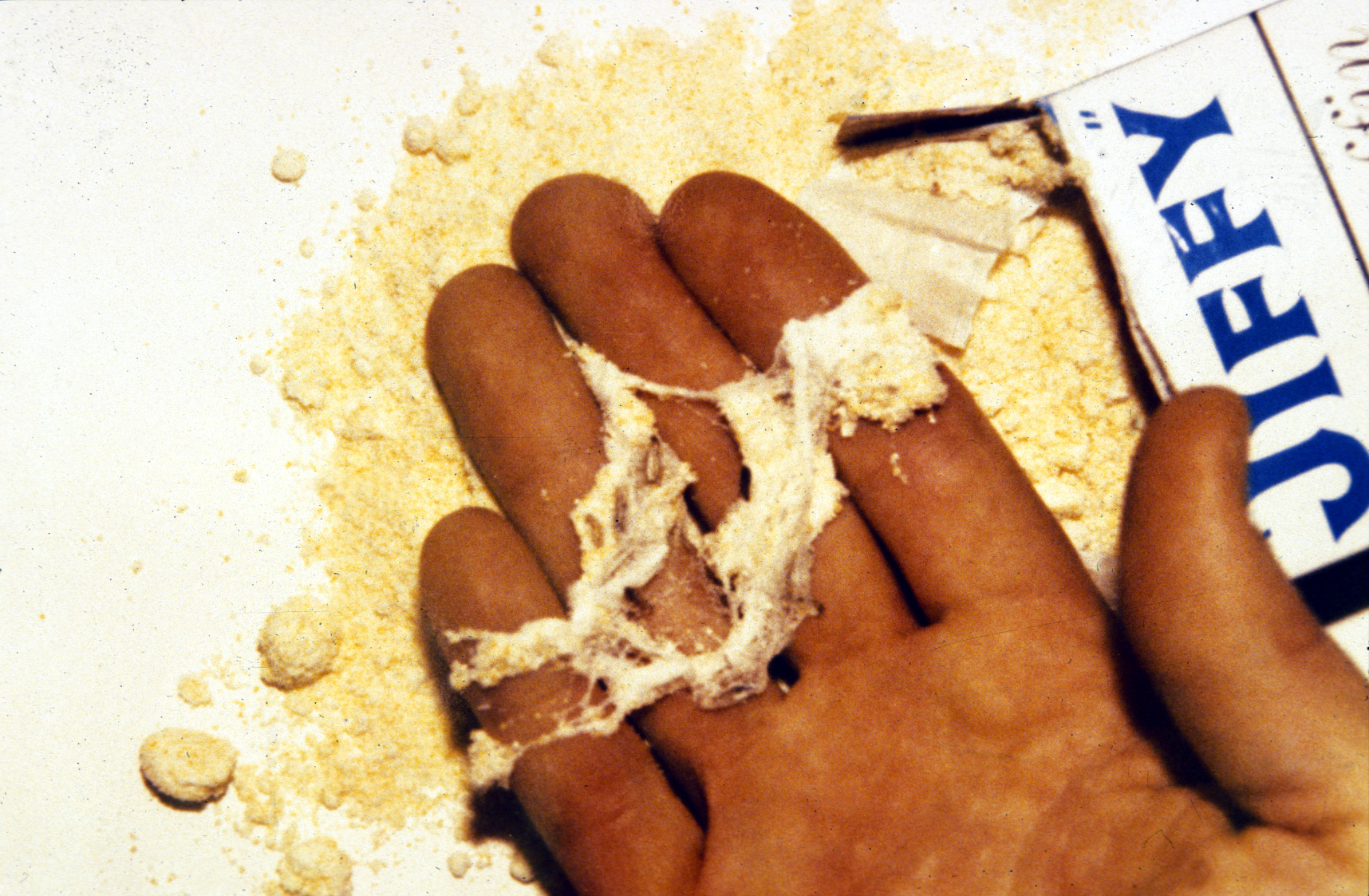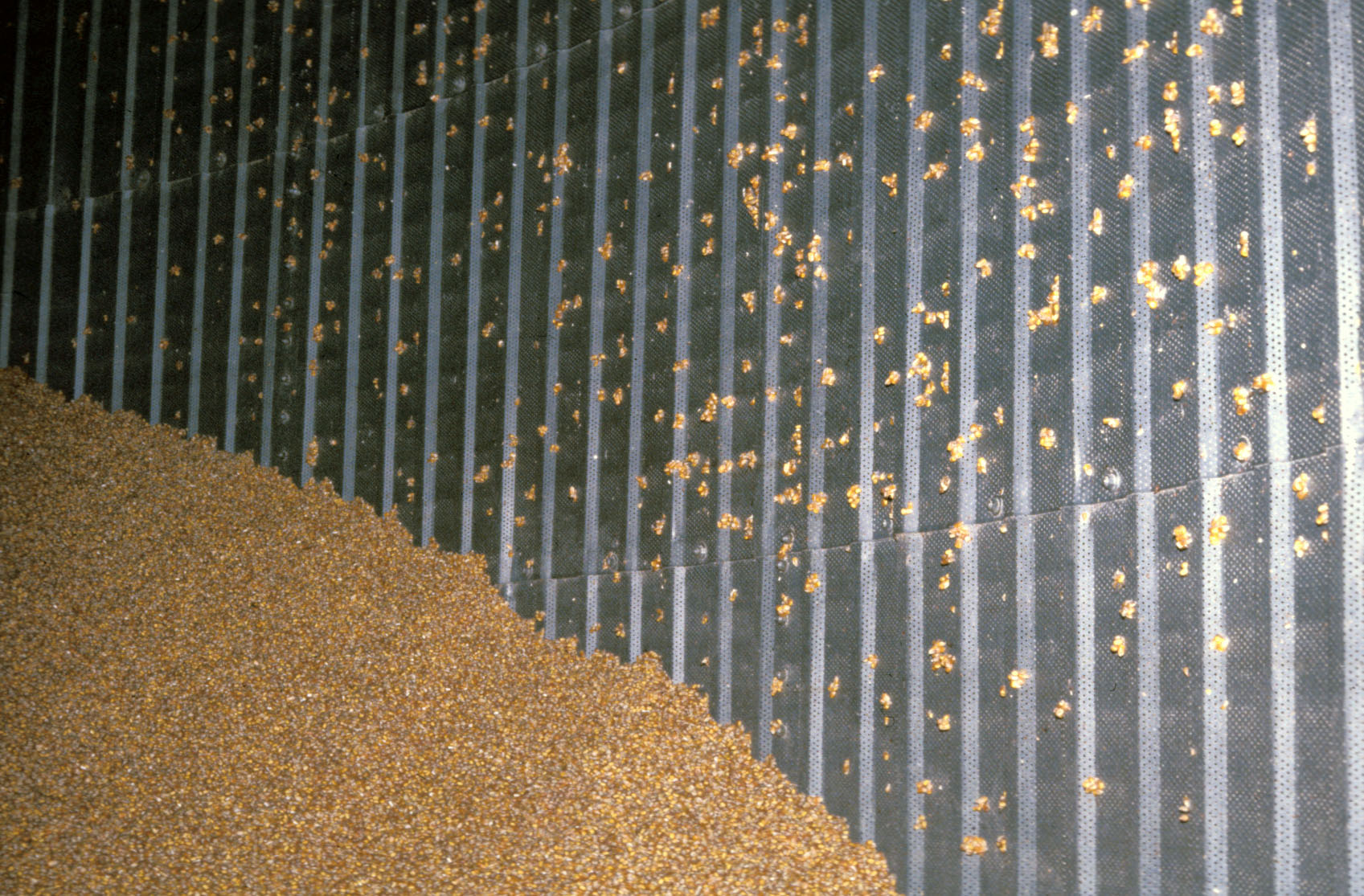Stored Product Pests
INDIANMEAL MOTH Plodia interpunctella (Hubner)
Linda J. Mason, Extension Entomologist
If you want to view as pdf, click here
DESCRIPTION
Adults are 5-10 mm (3/16 – 7/16 inch) long and have an average wing span of about 16 mm (11/16 inch). They are very easily identified. The lower two thirds of the fore wings are reddish bronze with irregular dark bands. The upper one third is silvery white or gray. Hind wings are silvery gray with a long fringe of hairs. Females are generally larger than males and have an expanded abdomen. Young larvae are white except for their head, which is dark. Full-grown larvae are usually yellowish white, greenish white, or pinkish. Larval size may vary depending on sex, food, and environment. Twelve to 14 mm (1/2 inch) is about average.
Indianmeal moth adult. (Photo Credit: John Obermeyer)
Indianmeal moth larva and pupa. (Photo Credit: John Obermeyer)
BIOLOGY AND BEHAVIOR
Forty to 400 eggs are deposited directly in or adjacent to food. The number of eggs is dependent on food, season, or temperature. Females start ovipositing within 3 days of emergence. Eggs are deposited mostly at night. Within a few hours of hatching, larvae begin to feed, leaving a silky thread behind. This silk can bind particles of food together, clogging machinery used in the food industry. There are 5-7 larval instars. The last larval instar usually will leave the food and search for a suitable place to spin a cocoon and pupate. The pupal case can be yellow brown to nearly black, depending on age. Upon adult emergence, females move to a surface above the food to release sex pheromone. Males are attracted to this pheromone for mating. Development time from egg to adult varies with temperature from 25 days at 30˚C (86˚F), 30 days at 25˚C (77˚F) and 60 days at 20˚C (68˚F). Minimum temperature/Rh for development is 64.4˚F/20% Rh; optimum is 86˚F/75% Rh and the maximum is 95˚F. Adults are generally short lived (about 7 days) and are nonfeeding.
Diapause is possible in the last (nonfeeding) larval instar. Larvae preparing to diapause spin a dense cocoon. At the onset of pupation, the larva chews a hole in the silk before spinning a flimsy pupal cocoon. It is believed that diapause provides a means of surviving winters in unheated situations. Diapause is induced by short photoperiod, low temperature, or high population pressure.
webbing in cornmeal. (Photo Credit: John Obermeyer)
Webbing in corn bin. (Photo Credit: John Obermeyer)
FOOD
Indianmeal moths can be found infesting a variety of grain and food materials. They have been reported from grain products, dried fruit, oilseeds and products, pulses, citrus pulp, fallen fruits, nuts, dried vegetables, seeds, dead insects, dried milk, spices, candies, chocolate, and drugs. In grain, larvae feed primarily on the embryo.
READ AND FOLLOW ALL LABEL INSTRUCTIONS. THIS INCLUDES DIRECTIONS FOR USE, PRECAUTIONARY STATEMENTS (HAZARDS TO HUMANS, DOMESTIC ANIMALS, AND ENDANGERED SPECIES), ENVIRONMENTAL HAZARDS, RATES OF APPLICATION, NUMBER OF APPLICATIONS, REENTRY INTERVALS, HARVEST RESTRICTIONS, STORAGE AND DISPOSAL, AND ANY SPECIFIC WARNINGS AND/OR PRECAUTIONS FOR SAFE HANDLING OF THE PESTICIDE.
November 2018

It is the policy of the Purdue University Cooperative Extension Service that all persons have equal opportunity and access to its educational programs, services, activities, and facilities without regard to race, religion, color, sex, age, national origin or ancestry, marital status, parental status, sexual orientation, disability or status as a veteran. Purdue University is an Affirmative Action institution. This material may be available in alternative formats.
This work is supported in part by Extension Implementation Grant 2017-70006-27140/ IND011460G4-1013877 from the USDA National Institute of Food and Agriculture.
1-888-EXT-INFO
www.extension.purdue.edu
Order or download materials from www.the-education-store.com






